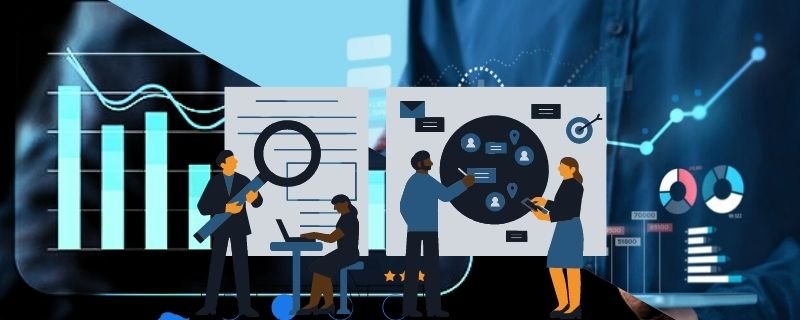Governance, risk, and Compliance software is a technology solution designed to help organizations manage and monitor their compliance with regulations, policies, and internal controls. This article discusses the importance of Governance, Risk, and Compliance (GRC) software’s application, benefits, limitations, and market value.
What is GRC software?
Governance, risk, and Compliance software is a technology that helps organizations manage their overall governance, risk management, and compliance efforts. This software typically includes integrated tools and modules to help businesses manage their policies, procedures, and regulatory obligations.
Governance tools in GRC software allow organizations to set policies and procedures to ensure that business operations comply with industry regulations and internal policies. Risk management tools identify and assess potential risks to the organization and help businesses develop strategies to mitigate or avoid them. Compliance tools help organizations adhere to regulations and standards, such as HIPAA, GDPR, SOX, or PCI DSS.
GRC software helps organizations identify and manage potential risks and ensure that they comply with applicable regulations while also improving operational efficiency and reducing the cost of compliance. It’s an essential tool for businesses operating in highly regulated industries like finance, healthcare, and manufacturing.
Why is GRC software important?
GRC software is essential for organizations operating in highly regulated industries or those seeking to reduce risk and improve compliance. Governance, Risk, and Compliance (GRC) software is important for several reasons:
Helps organizations manage risks
GRC provides a comprehensive view of an organization’s risks, allowing them to identify and manage potential risks that could impact its business operations. This proactive approach helps organizations avoid costly issues and reputational damage. GRC software allows organizations to identify potential risks by analyzing data from multiple sources, including financial statements, internal audits, and external regulatory requirements.
Ensures compliance
GRC software helps organizations comply with industry regulations and standards, such as HIPAA, GDPR, SOX, or PCI DSS. Compliance failures can result in hefty fines, legal action, and damage to a business’s reputation, so GRC is crucial in avoiding these consequences. GRC can centralize information about applicable regulations, standards, and policies, making it easier for organizations to ensure compliance with all relevant requirements.
Improves operational efficiency
GRC software streamlines and automates many governance, risk management, and compliance processes, which helps to reduce the time and effort required to manage these activities. This increased efficiency can result in cost savings and better allocation of resources. GRC can reduce the risk of manual errors, such as data entry errors or missed compliance deadlines, by automating compliance tasks and providing real-time monitoring of compliance activities.
Increases transparency
GRC provides real-time monitoring and reporting on governance, risk management, and compliance activities, making it easier for organizations to identify and address issues before they become significant problems. This increased transparency can help build trust with stakeholders, including customers, investors, and regulators. GRC can centralize information about governance, risk management, and compliance activities, making it easier to access and share with stakeholders. It can include information about policies, regulations, and risk assessments.
Application of GRC software
GRC software provides organizations with a comprehensive approach to managing risks, ensuring compliance, and improving governance. It helps organizations reduce the cost and complexity of GRC processes, increase visibility into risks, and improve decision-making. Here are some common applications of GRC software:
Risk management
GRC provides a systematic approach to identifying, assessing, and mitigating risks. It allows organizations to create a centralized risk management framework, automate risk assessment processes, and monitor real-time risks. GRC software must be integrated with other systems and applications the organization uses, and integration issues can arise due to differences in data formats, protocols, and interfaces.
Compliance management
GRC helps organizations ensure that they are compliant with relevant regulations and standards. It enables organizations to create compliance policies and procedures, track compliance activities, and generate compliance reports. It can help organizations stay up-to-date with regulatory changes by providing alerts and notifications when regulations change. It ensures that organizations are aware of any new requirements and can take action to ensure compliance.
Policy management
GRC software allows organizations to create and manage policies, procedures, and guidelines. It provides a centralized repository for policies and ensures that policies are updated and communicated to employees. It can facilitate policy review and approval workflows. It ensures that policies are reviewed regularly and updated to reflect changes in the regulatory environment or the organization’s operations.
Audit management
GRC enables organizations to manage audits, track findings, and generate reports. It allows auditors to conduct audits remotely and collaborate with other stakeholders. GRC software can help organizations prepare for audits by providing documentation, tracking audit findings, and generating reports. It ensures that organizations are audit-ready and can provide evidence of compliance when required.
Benefits of GRC software
GRC software offers several benefits for organizations. It improves efficiency, visibility, collaboration, decision-making, and agility while reducing compliance costs and risks. Here are some of the key benefits:
Increased efficiency
GRC software automates many governance, risk, and compliance management tasks. It saves time and effort for employees, enabling them to focus on higher-value activities. GRC helps standardize governance, risk, and compliance processes across the organization. It ensures that everyone follows the same processes and uses the same tools, reducing the risk of errors and inconsistencies.
Better visibility
GRC software provides better visibility into an organization’s risks and compliance status. It allows organizations to identify risks and compliance gaps and take action to address them proactively. GRC can monitor compliance with regulatory requirements and internal policies. It helps organizations meet their compliance obligations and reduces the risk of non-compliance.
Improved collaboration
GRC software enables collaboration between departments and stakeholders in governance, risk, and compliance management. It promotes better communication, coordination, and alignment across the organization. GRC provides a centralized governance, risk, and compliance information repository. It allows all stakeholders to access the same information and stay updated on changes or updates.
Enhanced decision-making
GRC provides insights and analytics that enable better decision-making. It allows organizations to assess risks and compliance issues accurately and make data-driven decisions to mitigate them. It can enhance decision-making by providing real-time data, analytics and reporting, automated risk assessments, compliance monitoring, and collaboration tools. GRC software can facilitate stakeholder collaboration, enabling them to identify and address issues.
Limitation of GRC software
While Governance, Risk, and Compliance (GRC) software can provide many benefits, there are also some limitations. Here are some of the limitations of GRC software:
Complexity
Complexity is a common limitation of Governance, Risk, and Compliance (GRC) software. Implementing and configuring GRC can be complex and time-consuming, requiring significant resources and expertise. It can be particularly challenging for smaller organizations with limited resources or less complex governance, risk, and compliance needs. GRC software can be complex and require significant resources to implement, configure, and maintain.
Lack of customization
Lack of customization is another limitation of Governance, Risk, and Compliance (GRC) software. While GRC software can provide a wide range of functionality and features, it may not be customizable enough to meet an organization’s specific needs. It can lead to a lack of flexibility in the software’s functionality and reports, limiting its effectiveness. The software may have a one-size-fits-all approach that may not fit an organization’s unique needs.
Data quality
Data quality is another potential limitation of Governance, Risk, and Compliance (GRC) software. The effectiveness of GRC software depends on the accuracy, completeness, and consistency of the data used to populate it. If the data is incorrect or incomplete, the software may provide unreliable or incorrect results, leading to poor decision-making. Data quality can be particularly challenging when data is collected from multiple sources or is entered manually.
Cost
Cost can be a potential limitation of Governance, Risk, and Compliance (GRC) software. The software can be expensive to purchase, implement, and maintain, particularly for small and mid-sized organizations with limited resources. The cost of GRC software can vary widely depending on the features, capabilities, and level of customization required. In addition to the software license fees, organizations may need to budget for implementation costs, including hardware, software customization, data migration, training, and consulting fees.
How global GRC software are markets growing?
Grand View Research said the global Governance, Risk, and Compliance (GRC) software market value was USD 54,613.4 million in 2023. It is expected to reach USD 134.86 billion by 2030, with the market growing at a compound annual growth rate (CAGR) of 13.8 % from 2023 to 2030.
Key Companies
Some prominent global Governance, Risk, and Compliance (GRC) software market players include Dell Inc., FIS, IBM, Maclearglobal.com, MetricStream, Microsoft, Módulo Security Solutions S.A., Oracle, SAI Global Compliance, Inc., SAP SE, SAS Institute Inc., Software AG, Thomson Reuters, and Wolters Kluwer N.V.
Conclusion
Governance, Risk, and Compliance (GRC) software, including increased efficiency, visibility, collaboration, and decision-making, can benefit organizations. However, GRC software has limitations, including complexity, lack of customization, data quality, and cost.
Organizations should carefully evaluate their requirements and budget to overcome these limitations before selecting a GRC solution. They should consider working with a vendor that provides customizable software or has experience in customizing the software to meet the specific needs of their industry or business. Additionally, organizations should ensure that data is accurate, complete, and consistent and consider the total cost of ownership when evaluating GRC software solutions.



